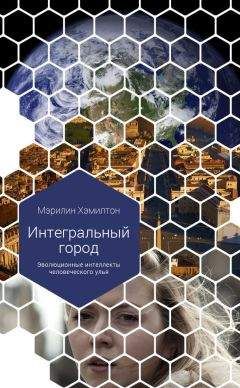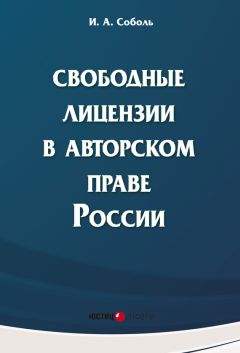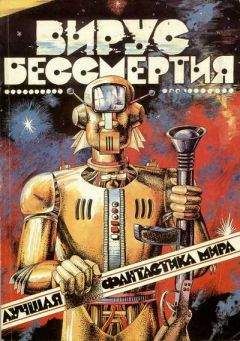Мэрилин Хэмилтон - Интегральный город. Эволюционные интеллекты человеческого улья

Помощь проекту
Интегральный город. Эволюционные интеллекты человеческого улья читать книгу онлайн
Andranonovich, G. D., & G. Riposa (1993). Doing Urban Research. Newbury Park, CA: Sage. Ascher, K. (2005). Anatomy of a City. New York: Penguin.
Barnett, T. P. M. (2005). The Pentagon’s New Map: War and Peace in the Twenty-First Century. New York: Berkley Publishing Group.
Baron-Cohen, S. (2003). The Essential Difference: The Truth About the Male and Female Brain. New York: Basic Books.
Bates, H. (2006). «Civilian Military Spouses: Resilience and Lifestyle Challenge.» Unpublished thesis, Royal Roads University, Victoria, BC.
BC Healthy Communities (BCHC). (2005). BC Healthy Communities Strategic Plan: 20052007. Victoria, BC.
BC Healthy Communities (BCHC). (2006). An Integral Map of Community. Victoria, BC.
Beck, D. (2002). «Spiral Dynamics in the Integral Age.» Paper presented at the Spiral Dynamics Integral, Level 1.
Beck, D. (2004). «Natural Designs and MeshWORKS: Creating our Region’s Tomorrow through Second Tier Leadership, Organizational Foresight and Integral Alliances.» Paper presented at the Spiral Dynamics Integral, Level 2, Natural Designs.
Beck, D. (2006). Spiral Dynamics Integral, Level 1 Course Manual. Denton, TX: Spiral Dynamics Group.
Beck, D. (2007). Personal communication. In M. Hamilton (Ed.), Messaging for Change. Winnipeg, MB.
Beck, D. (2007). The Meshworks Foundation: A New Approach to Philanthropy (Electronic Version). Retrieved January 15, 2008 from www.humanemergencemiddleeast.org/meshworks-foundation-philanthropy.html.
Beck, D. (January, 2008). A Spiral Full of Foundations. Sense in the City, 3.1.
Beck, D. & C. Cowan (1994, 1997). «The Future of Cities.» Unpublished article. The National Values Center.
Beck, D. & C. Cowan (1996). Spiral Dynamics: Mastering Values, Leadership and Change. Malden, MA: Blackwell.
Beck, D. & G. Linscott (2006). The Crucible: Forging South Africa’s Future. Columbia, MD: Center for Human Emergence.
Becker, J. (2007). «How Frameworks Can Help Operationalize Sustainable Development Indicators.» World Futures, 63(2), 14.
Belanger, S. (2004). «Enhancing Cooperation Between Critical Infrastructure Protection Organizations.» Unpublished thesis, Royal Roads University, Victoria, BC.
Benyus, J. M. (1997). Biomimicry: Innovation Inspired by Nature. New York: William Morrow.
Berry, W. (1977). The Unsettling of America: Culture and Agriculture. San Francisco: Sierra Club Books.
Bjerga, A. (June 30, 2007). «Mysterious Ailment Kills Millions of Bees in US: Disorder Poses a $75 Billion Threat to Agriculture, Washington Says.» Vancouver Sun.
Bloom, H. (2000). The Global Brain: The Evolution of Mass Mind from the Big Bang to the 21st Century. New York: John Wiley.
Braudel, F. (1987). A History of Civilizations (R. Mayne, Trans., 1993 ed.). New York: Penguin.
Braverman, E. (2006). The Edge Effect. New York: Sterling
Brown, B. (2005a). «Theory and Practice of Integral Sustainable Development: An Overview. Part 1: Quadrants and the Practitioner.» AQAL Journal, 1 (2).
Brown, B. (2005b). «Theory and Practice of Integral Sustainable Development: An Overview. Part 2: Values, Developmental Levels and Natural Design.» AQAL Journal, 1 (2).
Brown, B. (2005c). Theory and Practice of Integral Sustainable Development: An Overview. Part 3: Current Initiatives and Applications. AQAL Journal, 1 (2). Brown, B. (2006). Integrating the Major Research Methodologies Used in Sustainable Development. Unpublished.
Brown, T. W. H. (1989). Integrative Medicine Diagram. Unpublished.
Brundtland, H. (1987). Our Common Future. Oxford, UK: Oxford University Press.
Capra, F. (1996). The Web of Life: A New Scientific Understanding of Living Systems. New York: Anchor Doubleday.
Combs, A. (2002). The Radiance of Being: Understanding the Grand Integral Vision Living the Integral Life. St. Paul, MN: Paragon House.
Cook, D. (2005). The Natural Step: Towards A Sustainable Society. Totnes, Devon, UK: Green Books.
Covey, S. R. (1990). The 7 Habits of Highly Effective People. New York: Simon and Shuster.
Cummins, R. A. (1996a). «Assessing Quality of Life.» In Quality of Life for Handicapped People, R. I. Brown (Ed.), London: Chapman & Hall.
Cummins, R. A. (1996b). «The Domains of Life Satisfaction: An Attempt to Order Chaos». Social Indicators Research, 38.
Cummins, R. A., R. Eckersley, S. K. Lo, M. Davern, B. Hunter, & E. Okerstrom (2004). «The Australian Unity Well-being Index: An Update.» Paper presented at the Proceedings of the 5th Australian Conference on Quality of Life, Deakin University, Melbourne.
D’Adamo, P. J., & C. Whitney (2000). Cook Right 4 Your Type. New York: Berkely Books.
Dale, A. (2001). At The Edge: Sustainable Development in the 21st Century. Vancouver, BC: UBC Press.
Dale, A., & J. Hamilton (2007). «Sustainable Infrastructure» [Electronic Version]. Retrieved February 2008 from crcresearch. org/files-crcresearch/File/SI_Final_ Report. pdf
Dale, A., & J. Onyx (Eds.). (2005). A Dynamic Balance: Social Capital and Sustainable Community Development. Vancouver, BC: UBC Press.
Dale, A., L. Waldron, & L. Newman (2007). Sustainable Community Infrastructure Case Studies. Retrieved March 7, 2007, from www.crcresearch.org/community-research-connections/case-studies-sustainable-infrastructure
Davison, T. (2006). Leisure Services: A Service Delivery Model for the Future. Unpublished thesis, Royal Roads, Victoria, BC.
Dawson-Tunik, T. L., Commons, M. L., Wilson, M., and Fischer, K. W. (2005). The Shape of Development. The European Journal of Development Psychology, 2(2), 163–196.
Dawson, T. (2007). Testing Transformation: Transformation Testing [Electronic Version]. Retrieved from devtestservice.com
Deguire, C. (2005). Internal Communication in the Canadian Navy. Unpublished thesis, Royal Roads University, Victoria, BC.
De Landa, M. (1995). Homes: Meshwork or Hierarchy? Special Home issue. Retrieved December 4, 2004, from mediamatic.net/article-200.5956.html
De Landa, M. (1997). A Thousand Years of Nonlinear History. New York: Zone Books.
De Landa, M. (2006). A New Philosophy of Society: Assemblage Theory and Social Complexity. London: Continuum.
Diamond, J. (2005). Collapse: How Societies Choose to Fail or Succeed. New York: Penguin.
Durning, A. (2004). Cascadia Scorecard. Seattle: Northwest Environment Watch.
Durrance, B. (1997). «From Chaos to Chords: The Evolutionary Vision of Dee Hock.» Training & Development Magazine, 4.
Dutrisac, M., D. Fowke, H. Koplowitz & K. Shepard (nd). Global Organization Design: A Dependable Path to Exceptional Business Results Based on Requisite Organization Principles. Toronto: Global Organization Design Society.
Dychtwald, K. & J. Flower (1989). Age Wave. Los Angeles: Jeremy P. Tarcher.
Eddy, B. (2003a). Personal communication and notes.
Eddy, B. (2003b). «Sustainable Development, Spiral Dynamics and Spatial Data: A «3i» Approach to SD». Paper presented at the Spiral Dynamics Integral, Level II, Ottawa, 2003.
Eddy, B. (2005). «Place, Space and Perspective,» World Futures, 61, 151–163.
Eddy, B. (2006). The Use of Maps and Map Metaphors for Integration in Geography: A Case Study of Mapping Indicators of Sustainability and Wellbeing. Unpublished thesis, Dept. of Geography and Environmental Studies, Carleton University, Ottawa.
Eddy, B. (Cartographer). (2007). Mapping Integral Values: A Proof of Concept on Google Earth. Unpublished document.
Ehrlich, P. R. & A. H. Ehrlich (1997). «The Population Explosion: Why We Should Care and What We Should Do About It.» Environmental Law (00462276), 27(4), 1187.
Eoyang, G. (1997). Coping With Chaos: Seven Simple Tools. Cheyenne, WY: Lagumo.
Eoyang, G. (2007). Seeing and Learning Differently: Asset Building and Complex Change. Minneapolis: Search Institute Webinar Series.
Eoyang, G. & E. Olson (2001). Facilitating Organization Change: Lessons from Complexity Science. San Francisco: Jossey-Bass Pfeiffer.
Esborn-Hargens, S. (2005). «Integral Ecology: The What, Who, and How of Environmental Phenomena.» World Futures, 61(1, 2), 5 – 49.
Fainstein, S. & S. Campbell (Eds.). (2003). Readings in Urban Theory. Malden, MA: Blackwell.
Fernandez-Armesto, F. (2001). Civilizations: Culture, Ambition and the Transformation of Nature. New York: Touchstone.
Fisher, M. (2003). Fearless Leadership In and Out of the «Fear» Matrix. Unpublished doctoral dissertation, University of British Columbia, Vancouver, BC.
Florida, R. (2005). Cities and the Creative Class. New York: Routledge.
Foote, D. K. (1999). Boom, Bust & Echo 2000: Profiting from the Demographic Shift in the New Millennium. Toronto: MacFarlane Walter & Ross.
Fourman, M. (2006). Resilience: A complex fractal, global challenge demands a systemic collaborative approach. London, UK: Gaiasoft.
Fourman, M., C. Reynolds, K. Firus & A. D’Ulizia (2008). Online tools for developing sustainability and Resilience: Methodology, experience and cost effective solutions from MIDIR EU Reserch Project. London, UK: European Commission.
Friedman, T. L. (2005). The World Is Flat: A Brief History of the 21st Century. New York: Farrar, Strauss and Giroux.
Fuller, B. (1970). «Technology and the Human Environment.» In The Ecological Conscience: Values for Survival, R. Disch (Ed.), (pp. 174–180). Englewood Cliffs, NJ: Prentice Hall.
Gardner, H. (1999). Intelligence Reframed: Multiple Intelligences for the 21st Century. New York: Basic Books, Perseus Books Group.
Geiken, B., B. Brown & M. Fourman (2005). «Integral Policy Implementation and Follow-Up.» Personal communication.
Global Reporting Initiative. (2006). Reporting Guidelines. Amsterdam: Author.
Goleman, D. (1997). Emotional Intelligence. New York: Bantam.
Gore, A. (2007). An Inconvenient Truth: The Crisis of Global Warming. New York: Viking.
Gottdiener, M. & R. Hutchison (2006). The New Urban Sociology, (3rd ed.). Boulder, CO: Westview Press.
Gould, J. L. & C. G. Gould (1988). The Honey Bee. Scientific American Library.
Gozdz, K., Ed., et al, (1995). Community Building: Renewing Spirit and Learning in Business. San Francisco: New Leaders Press, Sterling & Stone Inc.
Graves, C. (1971). «A Systems Conception of Personality: Levels of Existence Theory.» Paper presented at the Washington School of Psychiatry.
Graves, C. (1974). «Human Nature Prepares for a Momentous Leap.» The Futurist.
Graves, C. (1981). Summary Statement: The Emergent, Cyclical, Double Helix Model of the Adult Human Biopsychosocial Systems. Retrieved July 3, 2002, from www.clarewgraves.com/articles_content/1981_handout/1981_summary.pdf
Graves, C. (2003). Levels of Human Existence. Santa Barbara: ECLET Publishing.
Graves, C. (2005). The Never Ending Quest: A Treatise on an Emergent Cyclical Conception of Adult Behavioral Systems and Their Development. Santa Barbara, CA: ECLET Publishing. Gregory, R. L.,
Ed., et al, (1987). The Oxford Companion to The Mind. Oxford: Oxford University Press.
Grunwald, M. (August 13, 2007). «The Threatening Storm: How Years of Misguided Policies and Bureaucratic Bungling Left New Orleans Defenseless Against Katrina – and Why It May Happen Again.» Time, 19–31.
Gunderson, L. C. & C. S. Holling (Eds.). (2002). Panarchy: Understanding Transformations in Human and Natural Systems. Washington, DC: Island Press.
Habermas, J. (1984). The Theory of Communication. (T. McCarthy, Trans. Vol. 1). Boston: Beacon.
Hagelin, J. (June-August, 2007). «The Power of the Collective.» Shift: At the Frontiers of Consciousness, 15, 16–20.
Hamer, D. (2004). The God Gene: How Faith Is Hardwired into Our Genes. New York: Doubleday. Hamilton, M. (1999). The Berkana Community of Conversations: A Study of Leadership Skill Development and Organizational Leadership Practices in a Self-organizing Online Microworld. Unpublished doctoral dissertation, Columbia Pacific University, Novato, California.
Hamilton, M. (2003). Abbotsford Values Systems Flower Map [Graphical Data]. Retrieved July 24, 2008: www.integralcity.com/files/Spiral.flower.icity.pdf Abbotsford, BC.
Hamilton, M. (2005). «The Quest: Four Questions That Can Release the Potential of Your City.» Paper presented at the Canadian Institute of Planners: Frontiers in Planning and Design, Calgary, AB.
Hamilton, M. (2006a). «Integral Framework for Sustainable Planning: A Prototype for Emergent Well Being.» Paper presented at the World Planners Congress, Vancouver, BC.
Hamilton, M. (2006b). «Integral Meta-map Creates Common Language for Urban Change.» Journal of Organizational Change Management, 19(3), 276–306.
Hamilton, M. (2007a). «Approaching Homelessness: An Integral Reframe.» World Futures: The Journal of General Evolution, 63(2), 107–126.
Hamilton, M. (2007b). Personal Wellbeing Index: Toronto. Abbotsford, BC: Integral City, a Division of TDG Holdings.
Hamilton, M. & A. Dale (2007). Sustainable Infrastructure Development: A Learning Framework. In publication.
Hawken, P. (May 7, 2007). «To Remake the World Something Earth-Changing Is Afoot Among Civil Society.» Orion Magazine.

























